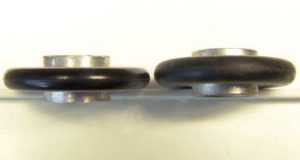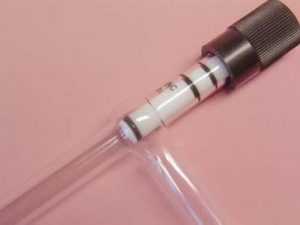Every electric sign needs periodic service for proper operation. This is why service contracts are the bread and butter of some signshops. But, how well serviced is your own shop’s equipment? Do your service contracts keep your equipment in solid operating condition, which allows work uninterrupted by costly repairs and downtime?
From my experience as a sign inspector, I’ve learned that most signshops don’t properly service their neon-vacuum systems. Thus, I’ll focus on necessary maintenance, and distinguish what shops should handle themselves and what requires expert attention.
When pumps go bad
Lack of knowledge about servicing your equipment allows slight problems to go unnoticed and degenerate until it’s too late. Neon fabricators often send prematurely defective tubes to my lab for inspection. The fabricator usually claims he hasn’t changed his processes, and now, suddenly, the tubes are showing problems. In most cases, my investigations prove the tubes’ performances have gradually deteriorated. When pressed, the fabricators generally admit they’ve failed to maintain the entire vacuum system.
Like a car motor or air compressor, mechanical vacuum pumps normally require oil lubrication, and the oil needs to be changed periodically. Vacuum-pump oil absorbs humidity, and, over time, the water revaporizes in the pump and spoils the final vacuum.
Like cars, if you know how to turn the right wrench, a do-it-yourself oil change is much cheaper than repair-shop service. If you have the skill and tools, the only thing you need is the right oil. Mechanical vacuum-pump oils maintain a very low vapor pressure, and they’re hydrophobic, or water-repellent, if they’re clean.
However, not all vacuum pump oils are equal. If a shop operates a belt-driven pump, any vacuum-pump oil should suffice, but, for direct-driven, fast-rotating pumps, some oils are too viscous at low temperatures.
Direct-driven pumps are mounted directly to an electric motor’s shaft. Electric motors generally can’t develop high torque at start-up, and they only achieve their torque at the nominal rpm. Using thick oils for direct-drive pumps is akin to trying to stir honey with a spoon, so I recommend thin, low-viscosity oil.
Contrastingly, belt-driven pumps use a transmission between the motor and pump. This increases the torque while reducing the rpm. Also, they often use flywheel clutches, which facilitate starting and lower torque requirements.
In winter, pumps may often fail to start because they’re overloaded by thick oil. Some large, vacuum-sales companies offer different grades. Thicker oil normally provides a better vacuum due to lower vapor pressure, but, if you use a direct-driven pump in wintry conditions, lighter oils work better. I’ve seen extra-thick oils offered for well-worn pumps, but it’s better to rebuild the worn-out pump than to change the oil &emdash; its condition will only worsen unless it’s rebuilt.
Dirty work
When changing the oil, thoroughly clean the vacuum’s manifold system. Parts may have accumulated the residue from thousands of neon tubes. However, only the experienced serviceperson should tackle this task.
The best cleaning compound is 99.9% pure acetone. To test its purity, place one drop on a clear, glass plate; if it evaporates quickly without visible residue, it’s good. Use acetone very carefully



 Photo Gallery1 week ago
Photo Gallery1 week ago
 Ask Signs of the Times2 weeks ago
Ask Signs of the Times2 weeks ago
 Paula Fargo6 days ago
Paula Fargo6 days ago
 Real Deal3 days ago
Real Deal3 days ago
 Benchmarks2 weeks ago
Benchmarks2 weeks ago
 Photo Gallery6 days ago
Photo Gallery6 days ago
 Women in Signs1 week ago
Women in Signs1 week ago
 Women in Signs1 week ago
Women in Signs1 week ago













